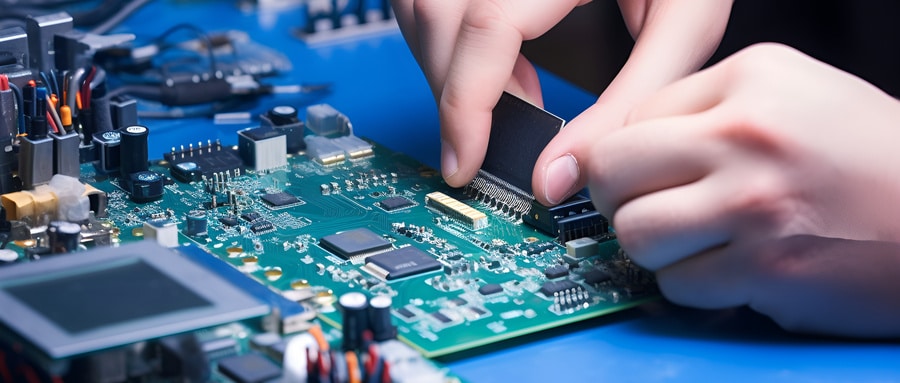Exploring the Global (Printed Circuit Board) PCB Market: Trends, Growth, and Opportunities
The printed circuit board (PCB) market plays an integral part of global electronics manufacturing. PCBs are intricately crafted boards used to connect and support electronic components. In this article, we’ll take an in-depth look at this global PCB market; its trends, growth factors and opportunities presented to industry players and stakeholders.
- Overview of the Global PCB Market:
Over the years, PCB production and use have experienced steady growth, due to growing consumer electronics demand across industries ranging from consumer electronics and automotive to medical devices, telecommunications networks and aerospace products incorporating PCBs as part of their design. - Demand for Smaller and More Advanced PCBs:
As electronic devices continue to advance, so too has the need for lighter, smaller PCBs with increased functionality in smaller form factors. With smartphone miniaturization, wearable technology and IoT devices becoming increasingly miniaturized and technologically sophisticated. High Density Interconnect (HDI) PCBs have evolved to address this trend by providing increased functionality within compact form factors. - Rising Adoption of Flexible PCBs:
Flexible printed circuit boards (flex circuits) have seen substantial adoption over the years due to their versatility and ability to conform to non-flat surfaces, finding applications across wearable devices, automotive electronics, medical devices, aerospace applications and wearable technology. Their market should experience significant expansion over the coming years. - Utilizing Advanced Technologies:
The PCB industry has become more adept at adopting cutting-edge technologies to keep up with market demands, such as using advanced materials like high-temperature substrates, metal core PCBs and ceramic PCBs to meet application specifications. Furthermore, using additive manufacturing techniques such as 3D printing is opening up a host of opportunities for design and production of PCBs. - Shift towards Eco-Friendly PCBs:
There has been an increasing emphasis on developing eco-friendly PCBs to address environmental concerns surrounding electronic waste and sustainability. Manufacturers are exploring different materials and manufacturing processes that reduce their environmental impact during PCB production, such as using lead-free solder, recyclable materials and employing proper waste management strategies. - Emerging Market Opportunities:
PCB manufacturers, suppliers and service providers in emerging markets–specifically Asia-Pacific–are experiencing exponential growth in the industry. Countries like China, India, Japan and South Korea have become key centers for electronic device production – creating significant PCB demand in these emerging markets. PCB suppliers and service providers should seize these opportunities to broaden their market presence and explore new business prospects. - Industry Challenges:
While the PCB market offers great growth potential, industry players face unique obstacles as they pursue it. These can include fierce competition, changing regulations and standards, fluctuating raw material prices and keeping up with rapidly advancing technologies – adapting to these obstacles is essential to long-term success in this space.

The global PCB market continues to experience steady expansion alongside an ever-evolving electronics industry. Technological innovations, an increase in demand for smaller and more advanced PCBs and the search for eco-friendly solutions are shaping this market, while emerging markets offer fresh opportunities. Industry players must remain agile and innovative if they hope to capitalize on them successfully; with quality-first strategies implemented and customer demands in mind, PCB market holds huge promise of growth and success.
PCB Market FAQ:
- What is the PCB market?
The PCB (Printed Circuit Board) market consists of all activities related to the production, sale, and use of PCBs worldwide. It incorporates the supply chain of manufacturers, distributors, and end-users in industries such as consumer electronics, automotive, telecommunications, and aerospace and defense. - What is the size of the global PCB market?
The exact size changes year by year, but as of recent reports, the global PCB market size was valued over USD 60 billion and it’s anticipated to grow at a significant rate in the forthcoming years. - What drives the PCB market growth?
Several factors contribute to the growing PCB market, including the increasing demand for smart devices, advancements in PCB technology, the growing automotive and medical electronics sectors, and the continued miniaturization of electronic devices. - Who are the key players in the PCB market?
Some of the leading players in the global PCB market include Zhen Ding Tech, Nippon Mektron, TTM Technologies, Unimicron, and Samsung Electro-Mechanics, PEAK, among others. - In which sectors is the demand for PCBs the greatest?
PCBs are used in a broad range of sectors. The greatest demand often comes from the consumer electronics sector (for devices such as smartphones, tablets, and computers), the telecommunications sector, and the automotive industry. - How is the PCB market segmented?
The PCB market can be segmented on the basis of product type (single-sided, double-sided, and multi-layer), substrate (flexible, rigid, and semi-flexible), end-use industries (consumer electronics, automotive, telecommunications, etc.), and by region (North America, Europe, Asia-Pacific, etc.). - What are the emerging trends in the PCB market?
Trends in the PCB market include advancements in technology like HDI (High Density Interconnect) PCBs, flexible PCBs, and sustainable (green) manufacturing processes. The rise of IoT (Internet of Things) devices and 5G technology also influences the PCB market. - How has the COVID-19 pandemic affected the PCB market?
The COVID-19 pandemic initially caused disruptions in the PCB supply chain due to lockdowns and the temporary closure of manufacturing facilities. However, the market is showing signs of recovery with increasing demand in health-related electronics and work-from-home essentials. - What is the forecast for the PCB market?
While exact figures vary depending on the source, most agree that the PCB market is positively projected to grow in the next few years. Factors contributing to this growth including increasing demand in evolving technology sectors like automotive electronics, IoT, and 5G. - What are the challenges in the PCB market?
Challenges in the PCB market might include fluctuating raw material prices, stringent environmental regulations related to e-waste, and increasing competition in the market, especially from low-cost manufacturers.























